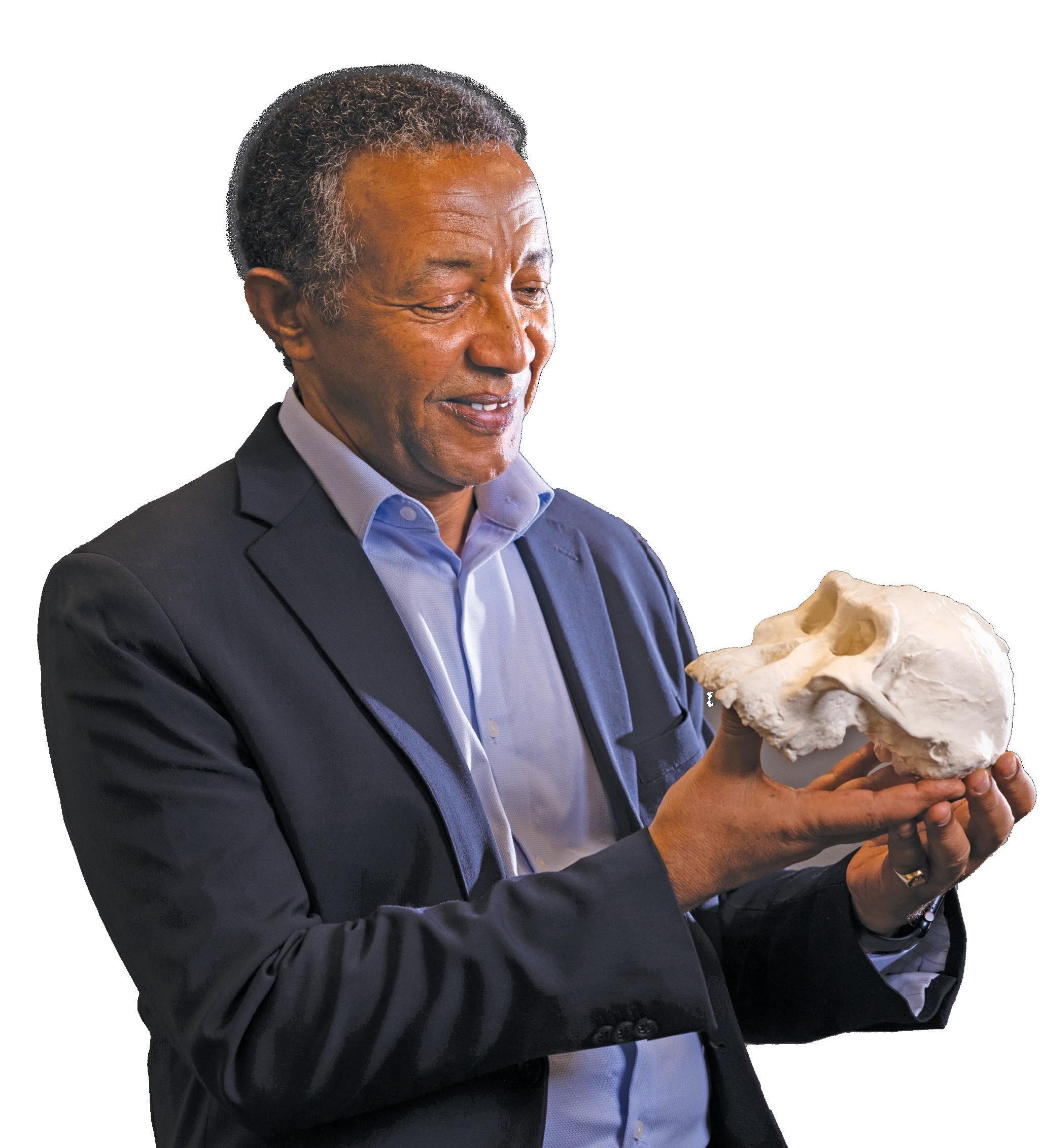
Lucy's discovery marked a critical moment in our understanding of the origins of humanity-and of Ethiopia's place at the heart of this story. Many other important fossils have since been discovered in the same Afar region—including by Yohannes Haile-Selassie, one of Ethiopia's leading paleoanthropologists and the director of the Institute of Human Origins at Arizona State University (ASU) in the US. His two Ardipithecus discoveries in the 1990s-while still a student-pushed understanding of our ancient origins back beyond 5 million years, changing some of the widely accepted beliefs about human evolution.
Yet in this interview, Haile-Selassie is critical that the study of ancient humans still fails to acknowledge and support the fundamental role of African scientists and institutions. Like many of his colleagues, he is now calling for paleoanthropology to be "decolonised", warning that otherwise, some African countries could take action to restrict future exploration of key sites across the continent:
Yohannes, you were a 14-year-old schoolboy in Ethiopia when Lucy was discovered. What are your memories of this landmark moment in your country’s history?
In fact, on the day Lucy was found —Sunday, November 24, 1974— Ethiopians woke up to some other devastating news. The previous night, Ethiopia’s military regime had executed more than 60 ministers and generals of Emperor Haile-Selassie’s regime. The announcement of Lucy’s discovery probably came up later that week, but I doubt many people paid attention to it amid all the turmoil, with the military regime taking control of Ethiopia.
Personally, I have no recollection of the announcement of Lucy’s discovery. I grew up in a Christian family, so as far as I knew at that time, it was God who created humans and I wouldn’t have understood the significance of Lucy.
Diese Geschichte stammt aus der January 16, 2025-Ausgabe von Down To Earth.
Starten Sie Ihre 7-tägige kostenlose Testversion von Magzter GOLD, um auf Tausende kuratierte Premium-Storys sowie über 8.000 Zeitschriften und Zeitungen zuzugreifen.
Bereits Abonnent ? Anmelden
Diese Geschichte stammt aus der January 16, 2025-Ausgabe von Down To Earth.
Starten Sie Ihre 7-tägige kostenlose Testversion von Magzter GOLD, um auf Tausende kuratierte Premium-Storys sowie über 8.000 Zeitschriften und Zeitungen zuzugreifen.
Bereits Abonnent? Anmelden

On shaky ground
Despite reporting net gains in green cover, the latest forest survey shows degradation of natural forests, particularly in ecologically sensitive hotspots

Burden of proof
The government's drive for e-KYC verification to ensure rightful targeting of beneficiaries has proved exclusionary for many

Rupee slide impacts agricultural trade
THE UNION Cabinet on January 1, 2025, approved the extension of a subsidy package of ₹3,500 per tonne on di-ammonium phosphate (DAP) for companies.

THE 500 GW SWITCH OVER
Coal is the king of energy at present. India needs to dislodge it with clean energy for an equitable green transition

MANIFESTING 500 GW
Ensure that renewable energy is available round the clock.Establish a viable market and reward those who take lead

Lifting a curse
How Gangabai Rajput helped her water-scarce village in Madhya Pradesh let go of superstition and revive an ancient waterbody

HOLD THEM SACRED
The Supreme Court has recommended that the Union government create a comprehensive policy for the governance and management of sacred groves across the country

REPORT CARD 2024
Coal is still the king in terms of electricity generation. But new renewables, mainly solar power, have shown an impressive growth

'India a laboratory for seismologists'
India is no stranger to earthquakes. In recent memory, Latur and Bhuj districts in Maharashtra and Gujarat witnessed devastating tremors in 2003 and 2001 respectively. Such quakes leave clues that can aid preparations for future events, say seismologists KUSALA RAJENDRAN, professor, Indian Institute of Science, and CP RAJENDRAN, adjunct professor, National Institute of Advanced Studies. The Rumbling Earth-The Story of Indian Earthquakes, captures their work on historical as well as recent quakes. In an interview with ROHINI KRISHNAMURTHY, they discuss the science of earthquakes, why the Himalayas are due for a huge event and why prediction remains a challenge. Excerpts:

Capturing Siang
As India pushes for a mega-dam on the Siang river to counter China's upstream projects, the Adi tribal community of Arunachal Pradesh fears losing ancestral land